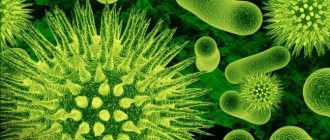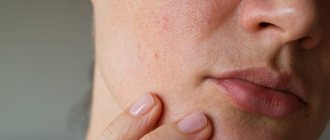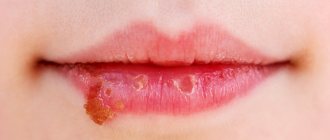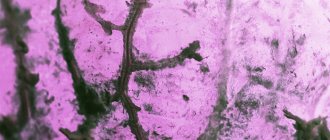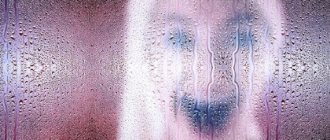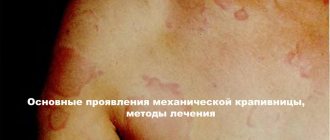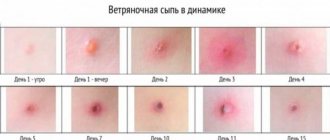Hives
According to statistics, almost every fifth of us at least once in our lives suffers from “itchy” diseases such as urticaria, angioedema or Quincke's edema. These tormentors can harass a person separately or together (in half the cases). Although it is sometimes difficult to determine the cause of rashes and blisters on the body, they are most often caused by allergens.
A doctor of the highest category, a specialist in allergic diseases, Doctor of Medical Sciences, Professor of the St. Petersburg Medical University named after Academician I.P., talks about prevention and ways to get rid of these unpleasant ailments. Pavlova Vyacheslav Anatolyevich Ignatiev.
Symptoms of urticaria
Urticaria, Quincke's edema and angioedema belong to a single group of allergic diseases with similar manifestations, but different development mechanisms.
The disease got its name - urticaria - for the characteristic pink blisters on the body, as if after a nettle burn, that turn pale under pressure, ranging in size from a millimeter to several centimeters, which cause unbearable itching. At the same time, the person’s temperature rises, weakness and headache occur. In susceptible people, urticaria affects areas of the skin or the entire body. According to the course of the disease, acute and chronic forms are distinguished.
In acute urticaria, a skin rash appears immediately after exposure to allergens or other irritants. Outbreaks of the rash usually subside after a few hours, less often they last for 24 hours. The disease itself goes away in 6-10 days. In the chronic form, the rash lasts for several months.
One of the most common types of the disease is cholinergic urticaria. It appears as a pinpoint, intensely itchy rash and blisters on the chest and neck. It is usually triggered by hot showers, exercise and emotional experiences. In patients with cold urticaria (exposure to cold water), blisters on the body usually appear not at the time of exposure to cold jets, but later. With urticaria pigmentosa, reddish-brown spots appear on the patient's skin. When scratched, they turn into blisters.
Angioedema (otherwise known as Quincke's edema, or giant urticaria) differs from ordinary urticaria in the depth of skin damage. Edema of significant size most often grows in places with loose tissue - on the lips, eyelids, cheeks, larynx, oral mucosa, external genitalia, and is accompanied by pain and burning in the affected areas.
In mild cases, Quincke's edema disappears without a trace after a few hours (sometimes after 2-3 days). Patients with moderate and severe forms should be hospitalized. The disease is especially dangerous due to swelling of the neck, mouth and larynx, as this can lead to suffocation. Hereditary angioedema is insidious, which can affect the gastrointestinal tract. It causes stomach cramps, nausea, vomiting, pain in the intestines, and the possible development of edematous laryngitis (inflammation of the larynx and vocal cords).
Angioedema manifests itself in allergic swelling of the lips, eyes, tongue, sometimes so severe that urgent medical attention is needed.
People with hypersensitivity to allergens should be extremely careful when choosing foods and taking medications to avoid these diseases. It is not recommended to consume peanuts, seafood, soy, fish, milk, wheat, chicken, tree nuts, food additives including sodium benzoate and sulfites, food colorings, and some fruits and berries (such as bananas and strawberries).
Medicines that can cause illness may include antibiotics (such as penicillin), sulfa and anti-inflammatory drugs, insulin, tranquilizers, codeine, painkillers, narcotics, some vaccines and serums. Aspirin rarely causes urticaria, but in the chronic form of the disease, the rash increases when taking aspirin.
Urticaria can be caused by the introduction of blood products or radiocontrast substances into the body; Quincke's edema and angioedema - drugs for heart failure and hypertension (Capoten, Renitek, Enap, Prestarium, etc.). The only reliable way to evaluate a drug as an allergen is to briefly stop taking it.
You should beware of the bites of bees, wasps, bumblebees, ants, as well as viral and parasitic infections (giardiasis, hepatitis, worms). Recurrences of urticaria are not uncommon in patients with chronic gastritis and peptic ulcers. It can also be “triggered” by fever, alcohol consumption, emotional factors, menstruation and other reasons.
Tips for hives
Itching, rash, swelling of the skin and mucous organs, blisters and blisters - all this is the result of the release of hytamine (this substance is present in all tissues of the body) under the influence of allergens. That is why, in the treatment of mild forms of diseases, antihistamines (Claritin, Zyrtec, Semprex, Telfast, Erius, etc.) are primarily prescribed. A combination of antihistamines and antidepressants may be used. Cleansing enemas and the use of enterosorbents (for example, activated carbon) often have a positive effect.
If the disease is severe, oral corticosteroids are taken in the clinic. Exacerbations of chronic urticaria will require treatment in specialized centers.
Treatment of urticaria with herbs
People susceptible to these “itchy” diseases should follow simple recommendations:
- bathe and wash your hands in warm water - avoid hot showers and baths, ice water, contact with ice (do not pick up ice cubes, for example); - do without harsh types of soap; — after bathing, apply moisturizers to the skin and dry with a soft towel; - Wear loose, lightweight cotton clothing; - try not to be in hot rooms; - Do not take aspirin, even if the outbreak has subsided; - if the body is overly excitable, use sedatives.
To prevent urticaria and the accompanying Quincke's edema and angioedema, ancient doctors recommend from time to time eating exclusively plant foods or at least for a while avoiding fatty meat, pork, game, spicy snacks and wine. Therapeutic folk advice is also effective. I can recommend some of them.
Wood lye. Burn the wood, pour clean ash with water, boil, let it settle, carefully drain the infusion, strain. Wash yourself with this lye. Boil 50 g of raspberry root over low heat for 15-20 minutes, leave for 1 hour, strain. Take 1/2 cup 4-6 times a day. Grate the celery root (you can put it through a meat grinder) and squeeze. Drink 1-2 teaspoons 2-3 times a day half an hour before meals. Or 2 tbsp. Infuse tablespoons of chopped fresh roots in 1 glass of cold water for 2 hours, strain. Drink 1/3 glass 3 times a day before meals. 1 tbsp. pour a spoonful of yarrow herb with 1 cup of boiling water (daily requirement), leave for 45 minutes. Drink 1/3 glass 3 times a day before meals. Or 1 tbsp. Pour 1 cup of boiling water over a spoonful of herbs and boil for 10 minutes. Drink 1/3 glass 2-3 times a day before meals. Or pour dry grass with 70% alcohol in a ratio of 1:10 and leave for 7 days. Take 40-50 drops 3 times a day. I would like to note that infusions, decoctions and tinctures of yarrow have high anti-allergic and blood purifying properties and normalize metabolism. Take dried duckweed in powder form, 1 tbsp. spoon 4 times a day before meals, with jam or honey (daily value - 16 g). When fresh, raw duckweed can be eaten as a salad, lightly salted and sprinkled with vegetable oil (daily value - 30 g). Or 1 tbsp. Pour 100 ml of boiling water over a spoonful of crushed duckweed, leave for 10 minutes and drink immediately. Take 4 times a day. Take 30 g of dead nettle leaves (white nettle) in 0.5 liters of water, bring to a boil, then cook over low heat for 2-3 minutes, leave for 1 hour, strain. Use for lotions. Pour 10 g of calendula officinalis inflorescences into 1/2 cup of boiling water and steam for 1-2 hours. Take 1 tbsp. spoon 2-3 times a day. Tincture of hawthorn and valerian: take both tinctures in equal quantities, mix and drop 30 drops into a glass of water. Take before bedtime. Small-leaved linden flowers - 25 g, fragrant woodruff grass - 20 g, walnut leaves - 50 g. Pour 2 teaspoons of this collection into 1 glass of boiling water, leave until completely cooled, strain. Drink 1 glass 2 times a day.
For complete recovery, it is useful to drink a fresh decoction of the series instead of tea and coffee for a long time. Brew the drink like tea and drink 20 minutes after brewing without limitation. The color of the decoction should be golden; if it is cloudy or green, it means that the string has lost its medicinal properties.
Acute urticaria - symptoms, treatment
Acute urticaria, which can last from several hours to several days, most often has an allergic nature. In contrast, chronic urticaria, which lasts for weeks or months, is very rarely an allergic reaction. Urticaria is often caused by food allergens and additives, as well as medications (often in the form of pseudo-allergies).
Symptoms
Hives can take many forms, but they are always characterized by a rash of blisters that may merge with each other. The rash can appear on any part of the body and is accompanied by severe itching.
Special forms of urticaria
Quincke's edema. The process affects the face and is accompanied by swelling of the lips, eyelids (“slit-like eyes”), mucous membranes and other parts of the body. There is no itching, but a painful burning sensation is felt.
Quincke's edema becomes life-threatening if the process spreads to the mucous membranes of the mouth and pharynx. A swollen tongue and back of the throat block the airway and can lead to suffocation.
The reasons for the development of urticaria are:
food allergens (eggs, fish, nuts, fruits); medications (penicillins, hormonal agents, sulfonamides); air allergens (pollen, wool, dust); insect bites (bees, wasps); infections (infectious mononucleosis, hepatitis B). Unlike allergic urticaria, there is one that is caused by physical factors: sun, cold, atmospheric pressure.
Hives - itchy blisters, how to treat
Urticaria is the general name for a group of diseases. The main symptom is itchy blisters, clearly demarcated, rising above the surface of the reddened skin, ranging in size from a few millimeters to several centimeters.
Acute urticaria is most often caused by medications, foods, infection, or hymenoptera bites. Chronic urticaria is often associated with a variety of pathologies. Cases of physical urticaria caused by cold, heat, physical activity, pressure, vibration, and sunlight are considered separately.
A feature of urticaria is its rapid development and equally rapid disappearance (from several minutes to several hours) after the administration of adequate therapy.
In clinical practice, the most commonly used classification of urticaria is based on etiological factors, for example, medicinal, food, mechanical (artificial), cold (the reaction to cold can be delayed, appearing after 1-2 days), thermal (occurs mainly before menstruation, during pregnancy, in the elderly, more often during the transition from cold to heat), toxic (with direct exposure to the skin of irritants - nettles, caterpillar hairs, jellyfish, bees, etc.), light (caused by ultraviolet, infrared and visible rays ).
Chronic forms of urticaria are often associated with dysfunction of the liver, kidneys, gastrointestinal tract, helminthic infestations, foci of chronic infection (in the tonsils, dental granulomas, gall bladder and duct, etc.), toxicosis of pregnant women, and decay products of malignant tumors.
Treatment of urticaria
Determining the cause of urticaria Removing the cause, if any, is the key to the success of further treatment. In the case of acute allergic urticaria, elimination diets are indicated that exclude the causative factor, as well as eliminating the allergen that has already entered the body using cleansing enemas (at least 3 days in a row). An elimination diet involves eliminating foods that can cause allergies or directly cause allergies. These include: chicken, strawberries (strawberries), citrus fruits (lemons, oranges, tangerines, grapefruit), chocolate and other sweets, smoked meats, spices, marinades, canned food, colored carbonated drinks, eggs. Treatment of urticaria involves taking antihistamines. The following antihistamines are used to treat urticaria: terfenadine, Bronal, teridine, Tofrin, astemizole, astelong, astemisan, gismanal, histolong, Zyrtec, Cetrin, Claritin, Lomilan, Kestin, Telfast. For cholinergic urticaria, the most effective are M-cholinergic blockers: bellataminal, bellaspon, belloid, etc.; Treatment of the underlying disease against which urticaria developed; correction of concomitant diseases.
To normalize the functional state of the digestive system, vitamins are prescribed: riboflavin, calcium pantothenate, vitamin U, ascorbic and nicotinic acids and pyridoxine in age-appropriate doses. To reduce vascular permeability and increase capillary tone, calcium chloride, glycerophosphate or gluconate is prescribed along with iron supplements, rutin or salicylates.
In particularly severe forms of urticaria, glucocorticoids are used briefly in combination with anabolic steroids (Nerobol, Retabolil).
External treatment is not significant. They use water-zinc pastes with 2-3% naftalan oil, as well as ointments and creams with glucocorticoid hormones (prednisolone, flucinar, fluorocort, lorinden C, deperzolon). At the same time, the same methods of physiotherapy are used as in patients with diffuse neurodermatitis.
Antihistamines in the treatment of urticaria
Urticaria is clinically characterized by the appearance of itchy, urticarial rashes on the skin. A wheal, the main morphological element of urticaria, is a limited swelling of the dermis with a diameter of several millimeters to several centimeters, hyperemic along the periphery and paler in the center. When edema spreads to the deep layers of the dermis and subcutaneous tissue, as well as mucous membranes, Quincke's edema (angioedema) is formed.
Quincke's edema occurs quite often. It is believed that 15–20% of the population have experienced at least one episode of urticaria [15]. The prevalence of all types of urticaria in children ranges from 2.1–6.7% [8].
In recent years, the classification of urticaria has been widely discussed.
The published consensus document [12, 13] categorizes urticaria into spontaneous, physical and special types. This classification is aimed at practicing physicians and is convenient for clinicians.
The etiological factors of urticaria are presented in Table 1.
Spontaneous urticaria
Spontaneous urticaria is divided into acute and chronic according to the duration of its course. Acute urticaria lasts up to 6 weeks. Chronic urticaria persists for more than 6 weeks and has an undulating course with alternating relapses and remissions.
Acute urticaria . The main etiological factors of acute urticaria (AU) are foods and drugs. The development of urticaria is possible with allergies to epidermal allergens (cat, dog), house dust mites and pollen allergens, hymenoptera venom (bees, wasps) [2, 7, 11].
Most often, the disease is caused by the development of IgE-dependent allergic reactions. Many studies have shown a high incidence of OK in patients with atopic diseases [3, 7, 12]. An analysis of clinical symptoms in children with food allergies conducted by I. Dalal et al. found that OK alone or in combination with angioedema was the most common clinical symptom of food allergy and was observed in 74.4% of cases [7].
A study conducted by T. Zuberbier et al. found that 50.2% of patients with acute urticaria had concomitant allergic diseases - hay fever, bronchial asthma, atopic dermatitis [16].
The development of urticaria may be due to the direct release of histamine and other biologically active substances from mast cells without the participation of immunological mechanisms. A number of foods, drugs, and chemicals can cause mast cell degranulation. Eating foods rich in histamine can also cause urticaria (Table 2).
Chronic urticaria (CU) . According to most authors, the most common causes of spontaneous chronic urticaria are infections - hepatitis, Helicobacter pylori-associated gastritis, staphylococcal and streptococcal infections. Foods and medications can also maintain chronic symptoms of urticaria, but, unlike acute urticaria, the role of IgE-dependent reactions in the formation of symptoms is minimal [2, 6, 11, 16].
Of great interest is the frequency of detection of autoantibodies to high-affinity IgE receptors (FceRI) and to IgE in patients with CC. The autoimmune genesis of urticaria is confirmed by skin tests with autoserum. There is still no consensus regarding the role of autoantibodies in the formation of urticaria symptoms; further research is needed.
In many cases, urticaria can be caused by diseases of the gastrointestinal tract, intestinal dysbiosis, and parasitic infestations.
Physical urticaria
Physical urticaria (PH) develops due to exposure to physical factors. The mechanism of development of the disease is not well understood. An important role of mast cell degranulation in the formation of FC symptoms has been suggested. Physical urticaria includes cold urticaria, solar urticaria, heat urticaria, dermographic urticaria, vibration urticaria and pressure urticaria.
Special forms of urticaria are cholinergic, adrenergic, aquagenic.
Treatment of urticaria
Treatment of urticaria largely depends on the form of the disease and causative factors. Nevertheless, the basic principles of therapy are the same; they include the following steps.
- Eliminating or limiting exposure to factors that cause urticaria.
- Conducting pharmacotherapy.
- Detailed examination of patients, treatment of diseases that may cause urticaria.
Pharmacotherapy . In patients with acute urticaria, exacerbation of chronic or physical urticaria, in order to relieve the acute condition, in most cases, the prescription of second-generation antihistamines is indicated. In more severe cases of the disease, parenteral administration of first-generation antihistamines is advisable (second-generation H1-blockers do not have dosage forms for parenteral administration), as well as glucocorticosteroids.
Treatment of patients with chronic urticaria requires great patience and close cooperation between the doctor and the patient. The quality of life of patients is seriously affected: itching can affect daily activity, disrupt sleep, rashes on the face embarrass the patient, severely limit his communication and professional activities. Patients require frequent and long-term use of antihistamines. First generation antihistamines have a number of undesirable effects that limit their use. The sedative effect and impairment of cognitive and psychomotor functions of the central nervous system are well known [4]. Low selectivity and binding of M-cholinergic receptors manifest themselves in dry mucous membranes of the oral cavity; in patients with bronchial asthma, the viscosity of sputum increases, which negatively affects the course of the disease. Urinary retention, constipation, and a possible increase in intraocular pressure limit the prescription of drugs to patients with concomitant diseases. An equally serious disadvantage of first-generation H1-blockers is their short-term action, the need for 3-4 doses per day, and fairly high doses. A decrease in therapeutic effectiveness with long-term use dictates the need to change the drug every 10–14 days.
Second generation antihistamines (desloratadine, loratadine, fexofenadine, cetirizine, ebastine) do not have these disadvantages. All drugs have a high safety profile, no serious side effects, and are easy to use. New antihistamines are prescribed once a day, regardless of food intake; there is no need to change drugs, since high therapeutic effectiveness remains with long-term use. It is possible to prescribe second-generation H1-blockers to patients with concomitant diseases for whom first-generation drugs were contraindicated.
Of course, second generation antihistamines differ from each other. General practitioners, dermatologists, and pediatricians are faced with the question: which drug should be prescribed to the patient?
In recent years, quite a large number of studies have been conducted in an attempt to determine which antihistamine is superior to others. Using the results of comparisons in practical work is difficult, since individual parameters were studied in sample groups of sick or healthy individuals, and adequate dosages of the drugs being compared were not always used. However, most researchers conclude that the newer non-sedating antihistamines are comparable in effectiveness, safety, and ease of use. Patient preference may be the determining factor when choosing between second-generation antihistamines [9, 10, 15].
Considering the participation of histamine in the formation of all symptoms of urticaria [1], second-generation antihistamines are the first choice drugs. In addition to the direct antihistamine effect, new H1 blockers have anti-inflammatory activity. Taking them regularly eases the course of the disease and improves the quality of life of patients.
For questions regarding literature, please contact the editor.
We conducted a double-blind, placebo-controlled study of the effectiveness and safety of the drug kestine (ebastine) in patients with chronic urticaria. The study included 40 patients with chronic urticaria aged 16–61 years. Women - 35, men - 5.
Before inclusion in the study, patients had not received systemic antihistamines for 7 days or more. Throughout the study, patients did not receive macrolides (erythromycin, clarithromycin) and azoles (intraconazole, ketoconazole). The patients did not have severe concomitant diseases. According to the ECG, there was no prolongation of the QT interval.
For 8 weeks, 30 patients received kestin 20 mg/day and 10 patients received placebo.
Patients noted in a diary every evening the severity of itching, the number and size of urticarial rashes. The dynamics of symptoms were assessed by a doctor during visits. The doctor and patients recorded the occurrence of adverse events, their manifestations and the necessary therapy. There were 3 visits in total: the first visit was the starting one, the second was 4 weeks later, and the third visit was 8 weeks after inclusion in the study.
Considering that itching is the main symptom of urticaria, which significantly reduces the patient’s quality of life, Tables 4 show the dynamics of the severity of itching in patients after 4 and 8 weeks of therapy. In the group receiving kestin, all patients showed regression in the severity of this symptom. Among patients receiving placebo, the effectiveness of therapy was significantly lower - 5 (50%) patients were prematurely excluded from the study due to lack of effect over the same time. The overall effectiveness assessment indicates the high effectiveness of kestin 20 mg/day in patients with chronic urticaria compared to placebo (Table 6).
During the entire observation period, no sedation, serious adverse events, or prolongation of the QT interval on the ECG were recorded in both groups.
Thus, second-generation antihistamines are highly effective and safe drugs. They are the first choice drugs for controlling urticaria symptoms in most patients. At the same time, it should be emphasized that achieving pharmacological control of the symptoms of urticaria does not exclude the need to conduct a thorough diagnostic search and identify possible causes of the development of urticaria.
I. V. Sidorenko , Candidate of Medical Sciences, Associate Professor T. V. Zakharzhevskaya , Candidate of Medical Sciences A. V. Karaulov , Doctor of Medical Sciences, Professor of MMA named after. I. M. Sechenova, Moscow
How to recognize the disease and identify its causes?
Urticaria on the body of an adult has characteristic signs:
- The rash appears immediately after exposure to the allergen, within a few minutes, and goes away just as quickly, often within a day.
- The rashes are most often localized on the arms, legs, and body, but can occur on any part of the body.
- The rash is characterized by the appearance of blisters that rise above the surface of the skin, pale pink or reddish in color, with clear contours. Blisters can merge into large spots.
- The rash is accompanied by severe itching3.
You can identify the cause of the rash yourself if you track the factor that causes specific symptoms to appear. However, the connection is not always obvious, so laboratory tests have to be carried out to accurately determine the allergen. They are called provocative tests. Investigations should not be performed during an exacerbation4.
Urgent Care
Algorithm of action in the event of a sudden allergic reaction with characteristic rashes:
- Immediately stop contact with the allergen, if possible. If we are talking about food or medicine, then the use of sorbents is recommended. It is not advisable to perform gastric lavage on your own due to the risk of Quincke's edema. When bitten by insects, it is recommended to limit the spread of poison and remove the sting.
- Taking second generation antihistamines. One of the recommended drugs, which begins to act after 20 minutes, is Cetrin. The active substance Cetirizine is characterized by high efficiency and reduced side effects, including drowsiness2.
- If signs of breathing problems, changes in heart rate, drop in blood pressure, or signs of Quincke's edema appear, you should immediately call an ambulance4.
Treatment of urticaria in adults is carried out immediately after the onset of symptoms. Delay can cause life-threatening complications, especially with continuous exposure to the allergen.

